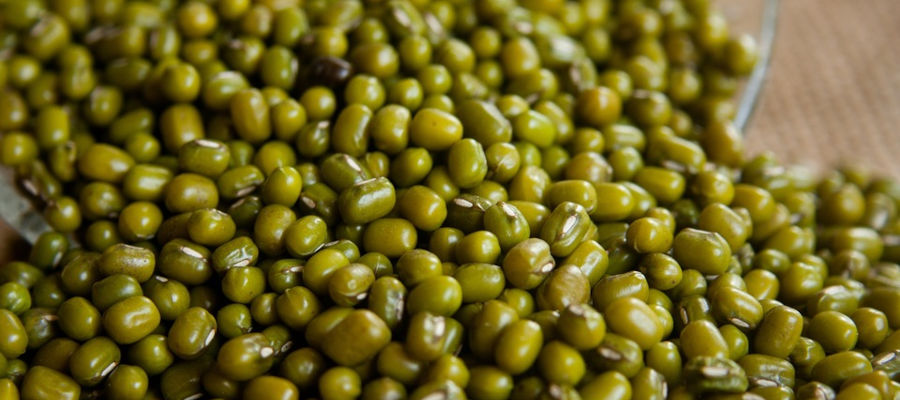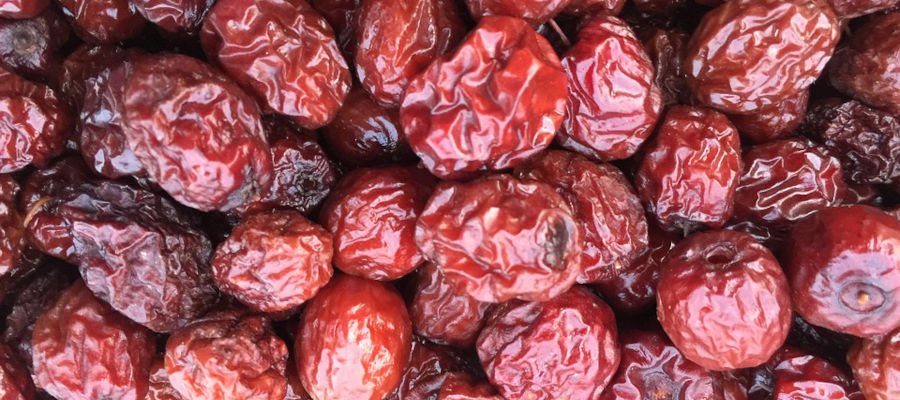What are Mung beans?
Commonly called lunja beans or Jerusalem beans, mung beans are a legume that belongs to the papilionaceous family. Because of how similar they are to soy sprouts, mung beans are mistaken for them, but they are unique on their own. These beans look like small, rounded seeds, although they are bean kernels and are about the size of a pea. They originated in India and are now found all throughout Asia, while their delicious nature is causing them to also extend to places in Europe and North America. Because of their similarity, mung bean sprouts are often confused with bean sprouts. However, mung bean sprouts are much fresher in taste. There are approximately 200 different types of mung beans being grown around the world, but these Mung Beans are of the green variety.
What do Mung beans taste like?
Mung beans have a semi-starchy feel like many other types of beans. Their flavor is subtle and mild, making it easy for you to incorporate them into a variety of different dishes with just as many flavors to add some unique texture without changing the overall taste of the dish. Because of their versatility, they are a staple in many households.

Random Mung Beans
How do you cook with Mung beans?
Mung beans are versatile in the way that they can be incorporated into soups, stews, salads, and more. Cooking with mung beans is not unlike cooking with any other dehydrated beans. This means they can easily be added to wet foods like soups and hydrated that way as a part of the rest of the soup. If you want to enjoy these beans on their own or add them to a salad, you will first need to hydrate them separately. This is done by lightly salting water and putting in your preferred amount of mung beans. Then, the beans will need to soak for four to five hours before use.
Mung beans: Purchasing and storage
The seeds, i.e. the actual mung beans, are available dried in Asian shops and health food stores - either whole or peeled and halved. The whole, unpeeled fruits are green, whereas the already processed ones are yellow. Also available are the fresh mung bean sprouts. Dried mung beans have a shelf life of about one year when packed firmly and dry. When you purchase the mung bean sprouts, you should consume them within 2 days if possible. In Asia, mung bean sprouts are often only available in large units. You can also freeze them if necessary. However, they are no longer crunchy after defrosting. Therefore the sprouts are only suitable for pan or wok dishes. Simply put them frozen directly into the pan.
Preparation of Mung Beans
Dried mung beans must first be soaked in plenty of salt-free water for at least 4 hours. Their cooking time is then about 30 minutes. You can cook the halved and peeled mung beans in the same time without soaking them beforehand. Mung beans are versatile with their nutty, mild taste. They go just as well in soups and salads as in vegetable and pan dishes. You can also process mung beans into a puree that you can either enjoy pure or cut out into cams and bake in fat or in the oven. Incidentally, Asian glass noodles are made from the flour of dried mung beans. Peeled, halved mung beans are particularly well-known from the Indian national dish Dal. You can also easily let mung beans germinate at home. To do this, you have to let them soak in water overnight. The next day, the water is poured off and the mung beans are placed in germination trays or jars (available in drugstores or health food shops) to sprout. The temperature should be around 20 degrees Celsius. If you rinse mung beans daily, you can harvest 1-2 cm long sprouts after about 2-3 days. They taste delicious in salads, wok dishes, or as a soup garnish.
Mung beans: Ingredients
Mung beans are extremely healthy. One advantage is that they are much easier to digest than the conventional garden bean and are not supposed to cause flatulence. However, their taste is also less intense. Mung beans also have a very high protein content and are rich in fiber, vitamins, and minerals. Another plus: mung beans are considered to lower cholesterol. It is therefore worth tasting mung beans. Because with them you will not only conjure up something exotic but also healthy on your table.


